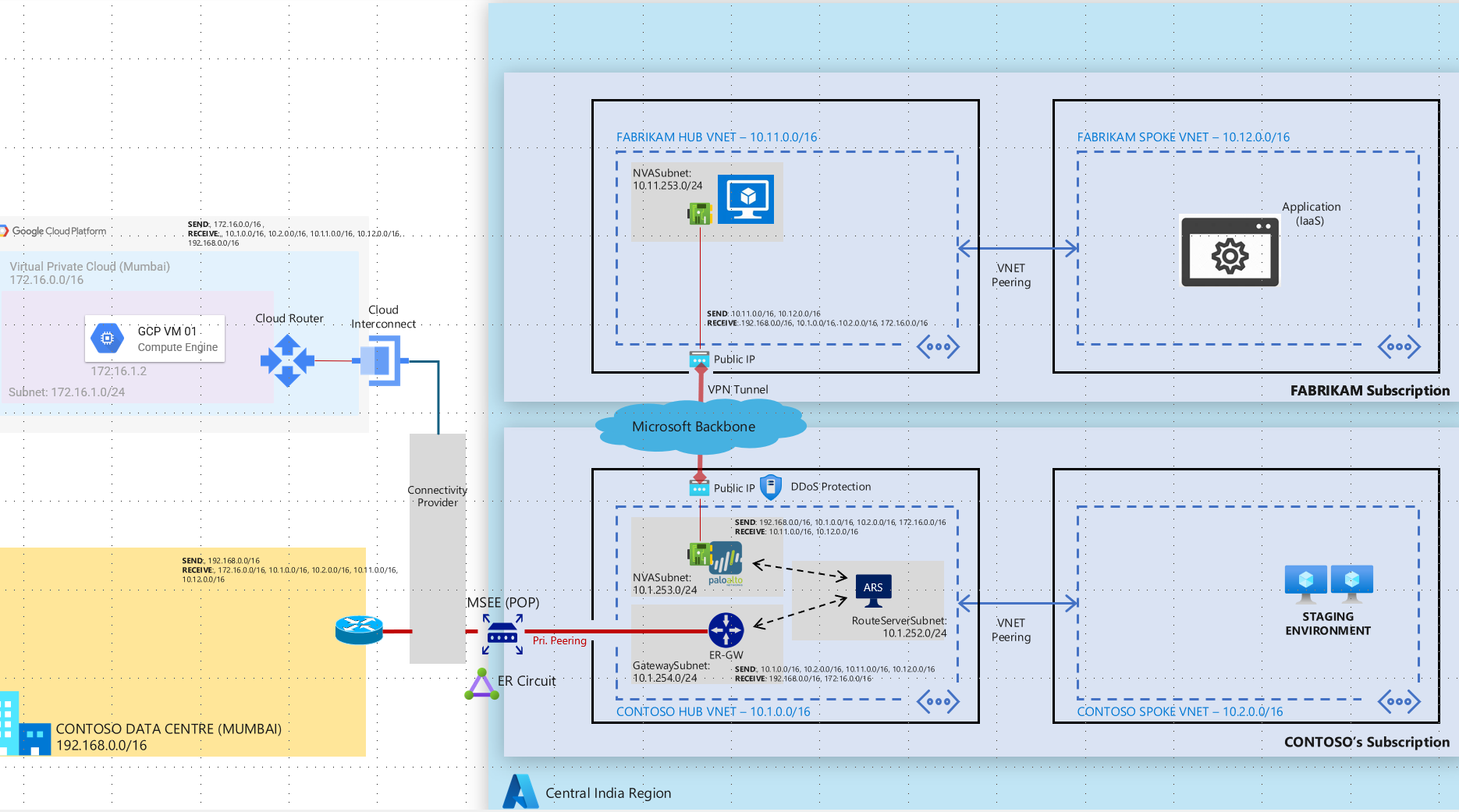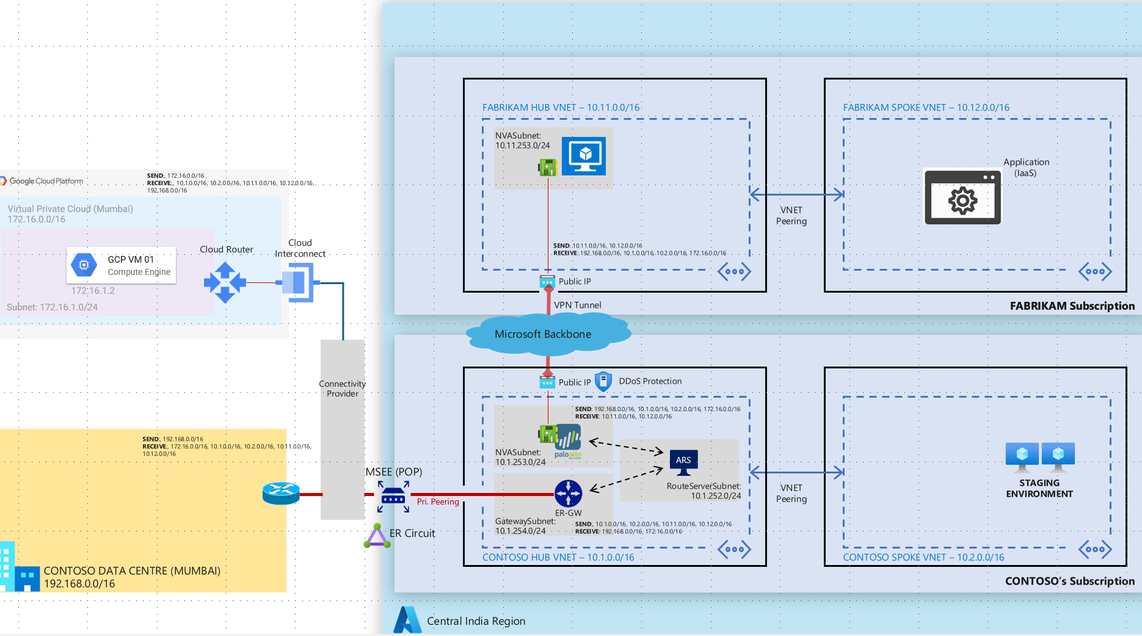ISV network connectivity pattern for data exchange over public IP address between Azure and onPrem

This blog discusses ISV connectivity patterns for a customer who wants to exchange data with an Azure SaaS provider.
Contoso Corporation (Customer)
Contoso Corporation wants to access a SaaS application hosted on Azure from his on-premises data centres. The customer wants to be able to securely send and receive data.
Fabrikam Technologies(SaaS Solution Provider on Azure)
The SaaS solution provider has a fixed architecture where the incoming connections can only come in via a public IP which would be shared with all their customers. This public IP belongs to the NVA hosted in it's hub subscription. The SaaS provider would in turn whitelist customers public IP address on their NVA to allow exchange of data. It will not accept any incoming connections via VNET peering as it wants to follow a uniform method of connectivity for all it's customers.
Possible Solutions
Provided below are some connectivity patterns that can be used for data exchange in this scenario.
1> Connection over Express route Private Peering
In this connectivity pattern Contoso will need to have a hub and spoke architecture with key components such Express Route Gateway, Azure Route Server and NVA deployed in the hub network. Customer will need to have a Express Route circuit provisioned. Express route gateway will be used to send and receive traffic from on-premises over the express route circuit. Azure route server will be used to exchange traffic using BGP between ER Gateway and NVA as NVA and ER gateway are not capable of exchanging traffic directly between themselves. A secure VPN tunnel between Fabrikam and Contoso NVAs will be used to securely exchange traffic over public IP addresses. In order to further secure this architecture both Fabrikam and Contoso can deploy Azure DDoS per IP protection to secure public IP addresses from DDoS attacks.
2> IP Sec overlay on MS Peering connection
Microsoft Peering is the interconnection between Microsoft’s global network (AS8075) and customer/ISP network for the purpose of exchanging internet traffic from/to Microsoft online services and Microsoft Azure Services or connections to/from public IP address range on Azure. Carriers or Service Providers can request to connect with Microsoft at any of the available Edge locations.
Contoso can request a Microsoft Peering circuit. The connectivity provider will then provision a MS peering connection between the providers location and Microsoft Edge routers. Both Fabrikam and Contoso will be required to announce their public IP addresses over this connection. Fabrikam and Contoso can setup a VPN tunnel over the MS Peering connection to provide a secure encrypted channel for data exchange. Azure DDoS per IP protection to be leveraged for protecting the public IP from DDoS attacks. Contoso does not need to have a subscription on Azure for this end to end connectivity.
Published on:
Learn moreRelated posts
One Azure, Many Logins: How Users Access Microsoft’s Cloud Safely
Users can access Microsoft Azure through several flexible and secure methods, depending on their role, device, and workload needs. The most co...
Unlocking New Possibilities: Microsoft Azure Hyperscale AI Computing with H200 GPUs Accelerates Secure AI Innovation in Azure for U.S. Government Secret and Top Secret
As artificial intelligence continues to reshape industries and redefine the boundaries of innovation, Microsoft is proud to announce a leap fo...
Tata Neu delivers personalized shopping experiences for millions of users with Azure DocumentDB
With Azure DocumentDB, Tata Neu delivers seamless authentication for millions of users, accelerates credit card onboarding across partners, un...
From Backlog to Delivery: Running Scrum in Azure DevOps
This is a practical, end-to-end guide to run Scrum with Azure DevOps — from backlog grooming through sprint delivery and continuous deployment...
Azure SDK Release (November 2025)
Azure SDK releases every month. In this post, you'll find this month's highlights and release notes. The post Azure SDK Release (November 2025...

